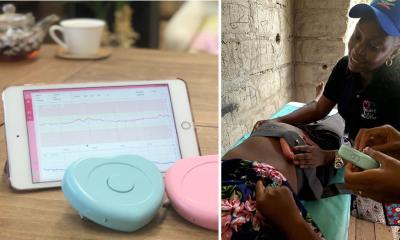News • Healthy listening
WHO aims to prevent hearing loss among young people
Nearly 50% of people aged 12-35 years – or 1.1 billion young people – are at risk of hearing loss due to prolonged and excessive exposure to loud sounds, including music they listen to through personal audio devices.
This new WHO-ITU standard will do much to better safeguard these young consumers as they go about doing something they enjoy
Tedros Adhanom Ghebreyesus
Ahead of World Hearing Day (3 March), the World Health Organization (WHO) and the International Telecommunication Union (ITU) have issued a new international standard for the manufacture and use of these devices, which include smartphones and audio players, to make them safer for listening. "Given that we have the technological know-how to prevent hearing loss, it should not be the case that so many young people continue to damage their hearing while listening to music,” says Dr Tedros Adhanom Ghebreyesus, WHO Director-General. "They must understand that once they lose their hearing, it won’t come back. This new WHO-ITU standard will do much to better safeguard these young consumers as they go about doing something they enjoy.”
Source: Unsplash/bruce mars
Over 5% of the world’s population – or 466 million people – has disabling hearing loss (432 million adults and 34 million children); impacting on their quality of life. The majority live in low- and middle-income countries. It is estimated that by 2050 over 900 million people – or 1 in every 10 people – will have disabling hearing loss. Hearing loss which is not addressed poses an annual global cost of US$ 750 billion. Overall, it is suggested that half of all cases of hearing loss can be prevented through public health measures.
The Safe listening devices and systems: a WHO-ITU standard recommends that personal audio devices include:
- “Sound allowance” function: software that tracks the level and duration of the user’s exposure to sound as a percentage used of a reference exposure.
- Personalized profile: an individualized listening profile, based on the user’s listening practices, which informs the user of how safely (or not) he or she has been listening and gives cues for action based on this information.
- Volume limiting options: options to limit the volume, including automatic volume reduction and parental volume control.
- General information: information and guidance to users on safe listening practices, both through personal audio devices and for other leisure activities.
The standard was developed under WHO’s “Make Listening Safe” initiative which seeks to improve listening practices especially among young people, both when they are exposed to music and other sounds at noisy entertainment venues and as they listen to music through their personal audio devices. The WHO-ITU standard for safe listening devices was developed by experts from WHO and ITU over a two-year process drawing on the latest evidence and consultations with a range of stakeholders, including experts from government, industry, consumers and civil society.
WHO recommends that governments and manufacturers adopt the voluntary WHO-ITU standard. Civil society, in particular professional associations and others that promote hearing care, also has a role to play in advocating for the standard and in raising public awareness about the importance of safe listening practices so that consumers demand products that protect them from hearing loss.
Source: World Health Organization
13.02.2019





